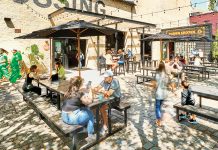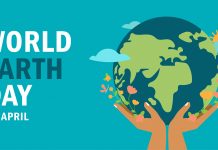
Nedezda Grapes / Adobe
I still remember a green, ghoulish mask I wore for Halloween when I was in first grade. The stiff black hair scratched my neck, and that breath-soaked smelly plastic clung to my face—first for a party at school, and later for trick-or-treating around my neighborhood.
That bogeyman mask—and a red ski mask for sledding in frigid Minnesota temperatures—served as early introductions to obscuring my face. Far from the default, but accepted practice under certain circumstances.
In daily life, before the spread of novel coronavirus, Americans saw face coverings on dentists, at the hospital, in factories, pop culture (superheroes, the Jim Carrey movie, The Masked Singer, etc.), and on some Muslim women. Many of us keep a few handy for home improvement projects. And in the early aughts, international news coverage of SARS and subsequent outbreaks further normalized imagery of everyday citizens in everyday situations donning protective facewear. Masks have long been familiar in the U.S., but not ubiquitous.
Masks Going Mainstream
Current CDC guidance recommends wearing a cloth mask (save N95s and PPE for healthcare professionals, please) as part of getting dressed to be out around other people. So, we are seeing less of our neighbors’ faces and thinking more about the implications of life’s many close-quarters situations. For generations, we have traveled, shopped, eaten, drunk, played, and gathered without sizing up every gathering for its contagion potential.
Now, streaming a show like political dramedy Veep has nearly as many wince-inducing moments as Netflix’s big-cats-meets-true-crime hit Tiger King—due to all of the handshakes taking place. Our reality is infected, and it’s going to keep mutating.
The lower halves of our faces control who we are, how we feel, and how we’re ultimately seen by others. They silently express approval and disapproval all day long. So when we’re forced to mask them, there’s dissonance. For our neighbors of color, the CDC’s new mask recommendation adds more than just inconvenience—it’s downright scary. “For me, the fear of being mistaken for an armed robber or assailant is greater than the fear of contracting COVID-19,” Aaron Thomas writes in a Boston Globe op-ed. Meanwhile, President Trump says he’s not going to bother wearing one. Privilege, or the lack thereof, separates how each of us will remember these times.
All of the societal changes tied to the current public health crisis are yielding behavioral firsts spanning communication, diet, work, school, transportation, and leisure time. One of mine was a now-commonplace Zoom happy hour with friends—one of us had a mask on. Nearly everyone remarked on it as they signed on. Underneath some gentle ribbing there was genuine concern. Since his wife is pregnant, he said, it was just a precaution after going to the store.
Suiting Up to Buy Bananas
Grocery shopping in the time of a pandemic has come to resemble science fiction. New partitions, zones marked with red tape, warning signs, and bare shelves are now the norm. Before my first shopping trip with my face covered, I followed an online tutorial on how to make a mask out of a bandana and rubber bands. Just like that, I was no longer my pre-COVID self. Seeing my own face covered for the first time, feeling the fabric catching my exhalations, reckoning with the restrictions on my face, it brought back memories of reckoning with that Halloween mask in first grade. Except today’s bogeyman is an invisible virus. Notably, it was still nothing compared to stories a friend told about nightly transformations into full hazmat gear before shifts at a Manhattan hospital. But it was still an unshakeable reminder of the current distorted state of affairs.
The people in line outside the grocery store were all wearing masks, some artistic, and some strictly medical. Collectively, we were all trying to not touch our faces, to stay 6 feet apart, and to constructively engage with a problem that we might not ever fully understand. Some communities across Minnesota and the U.S. have ignored or protested social distancing. The rest of us are grappling head on with what COVID-19 will mean for habitual behavior in the future.
But something clicked as my turn came to walk through the sliding doors. I felt a little bit better as I started placing produce in the pre-sanitized cart. I could hear the store’s piped-in music for the first time in months. Breathing became automatic, like settling into a running pace. It was nowhere close to as relaxed as any old trip for groceries. But it was less jarring than a previous trip, and the one before.
Instead of being symbols of a problem, the covered faces around me were proof that the people working at and visiting the store cared. They cared for their quarantined families waiting at home, and they cared for their fellow shoppers. And particularly they cared for the store’s employees—toiling day in and day out in a far-riskier environment than the one of just a few weeks ago.
Our Masked Future
A lot of days ahead could look and feel a lot more like Halloween, and gradually it will settle into a new reality. (Based upon Instagram ads I’ve seen of late, this will involve lots of antimicrobial brass keychains that can push germ-ridden elevator buttons for us.) In the meantime, we won’t be able to use our faces to show public compassion in the same way. Wearing a mask inhibits some of our communicative abilities, but it’s a statement in itself. I’m actually excited to wear a custom-made model a friend with serious seamstress skills has created. So many others have donated time, materials, and creative aplomb to help ensure there will be masks to go around. (And they can even be fashionable!)
A famous quote from the late, great Minnesota politician Hubert Humphrey passed around lately applies well: “It’s not what they take away from you that counts. It’s what you do with what you have left.” Our eyes, our words (spoken slightly louder through fabric), and our deeds can do much to quell fear felt by our neighbors and within ourselves.











